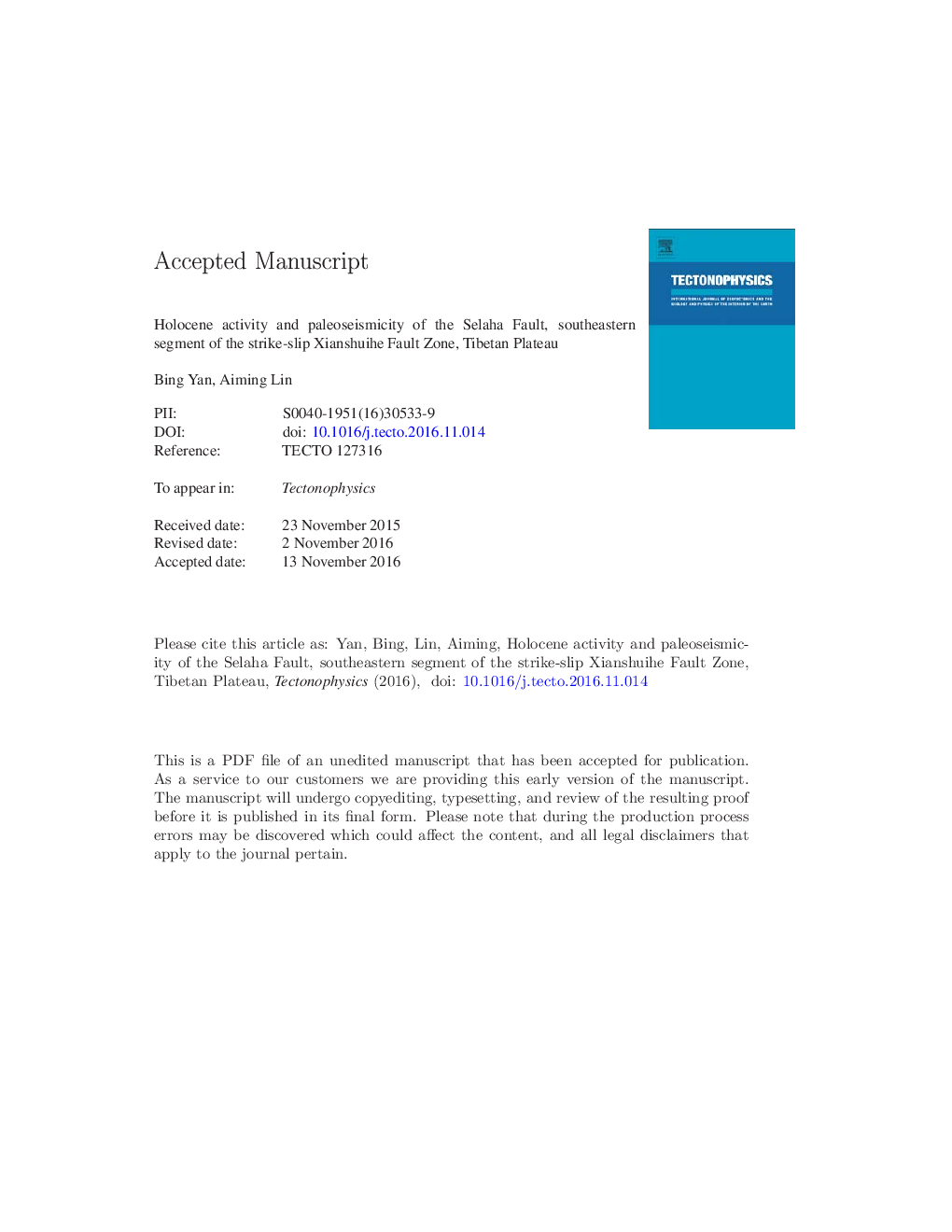| Article ID | Journal | Published Year | Pages | File Type |
|---|---|---|---|---|
| 5781717 | Tectonophysics | 2017 | 52 Pages |
Abstract
In this study we examine the Holocene activity, including slip rate and paleoseismicity, of the Selaha Fault, a branch of the left-lateral strike-slip Xianshuihe Fault Zone located along the southeastern segment of the Ganzhi-Yushu-Xianshuihe Fault System (GYXFS) of the Tibetan Plateau. Interpretation of high-resolution images and field investigations reveal that the Selaha Fault is characterized by left-lateral strike-slip faulting with an average horizontal slip-rate of ~ 9.0 mm/year during the Holocene. Trench excavations and 14C dating results show that at least three morphogenic earthquakes occurred during the past millennium; the most recent event occurred in the past 450 years and corresponds to the 1786 M 7.75 earthquake. The penultimate seismic event (E2) occurred in the period between 560 and 820 year BP (i.e., 1166-1428 CE) and is probably associated with the 1327 M 7.5 earthquake. The antepenultimate event (E3) is inferred to have occurred in the period between 820 ± 30 and 950 ± 30 year BP. Our results confirm that the Selaha Fault, as a portion of the GYXFS, plays an important role as a tectonic boundary in releasing the strain energy accumulated during the northeastward motion of the Tibetan Plateau in response to the ongoing northward penetration of the Indian Plate into the Eurasian Plate. The strain energy is released in the form of repeated large earthquakes that are recorded by strike-slip displacements of stream channels and alluvial fans.
Keywords
Related Topics
Physical Sciences and Engineering
Earth and Planetary Sciences
Earth-Surface Processes
Authors
Bing Yan, Aiming Lin,
